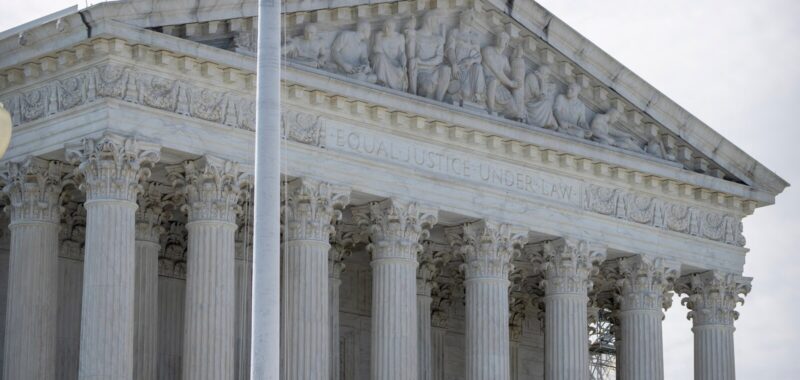WASHINGTON — The Supreme Court left in place Friday two Biden administration environmental regulations aimed at reducing industry emissions of planet-warming methane and toxic mercury.
The justices did not detail their reasoning in the orders, which came after a flurry of emergency applications to block the rules from industry groups and Republican-leaning states. There were no noted dissents.
The high court is still considering challenges to a third rule aimed at curbing planet-warming pollution from coal-fired power plants.
The regulations are part of a broader effort by the Biden administration aimed at curbing climate change that includes financial incentives to buy electric vehicles and upgrade infrastructure.
The industry groups and states had argued the Environmental Protection Agency overstepped its authority and set unattainable standards with the new regulations. The EPA, though, said the rules are squarely within its legal responsibilities and would protect the public.
The Supreme Court has shot down other environmental regulations in recent years, including a landmark decision that limited the EPA’s authority to regulate carbon dioxide emissions from power plants in 2022 and another that halted the agency’s air-pollution-fighting “good neighbor” rule.
The methane rule puts new requirements on the oil and gas industry, which is the largest emitter of the gas that’s a key contributor to climate change. A lower court previously refused to halt the regulation.
Methane is the main component in natural gas and far more potent than carbon dioxide in the short term. Sharp cuts in methane emissions are a global priority to slow the rate of climate change.
The methane rule targets emissions from existing oil and gas wells nationwide, rather than focusing only on new wells. It also regulates smaller wells that will be required to find and plug methane leaks.
Studies have found that smaller wells produce just 6% of the nation’s oil and gas but account for up to half the methane emissions from well sites. The plan also calls for a phased-in requirement for energy companies to eliminate routine flaring, or burning of natural gas that is produced by new oil wells.
The states challenging the rule called the new standards “impossible to meet” and said they amounted to an “attack” on the industry.
The mercury rule, meanwhile, came after a reversal of a move by the Trump administration. It updated regulations that were more than a decade old for emissions of mercury and other harmful pollutants that can affect the nervous system, kidneys and fetal development.
Industry groups and conservative-leaning states argued emissions were already low enough, and the new standards could force the shuttering coal-fired power plants.
The EPA said the updates are needed to protect public health.
David Doniger, senior attorney at Natural Resources Defense Council, called the two rules critical safeguards and applauded the order leaving them in place. He also looked ahead to the still-undecided challenges to the power plant rule.
“The court should do the same with the effort to block EPA’s power plant carbon pollution standards, which comply with the very directions the court gave it in 2022,” Doniger said.
___
Associated Press writer Matthew Daly contributed to this report.

